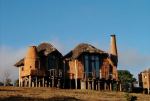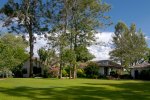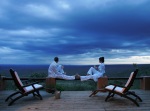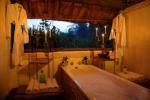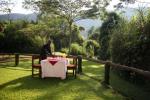Zambia’s Kafue National Park offers a truly remote wilderness safari with good game viewing, comfortable and reasonably priced accommodation.
To get the best out of the Kafue, we recommend a combination of three wonderful camps in the area, starting at Hippo Lodge which is located on the banks of the Kafue River. It’s a perfect destination for nature lovers, bird watchers and anglers alike. Days can be spent game-viewing on foot, by vehicle or boat. Guests can fish the Kafue hot spots, tick away at the bird list or unwind with a “sundowner” in the beautiful natural hot spring.
 Hippo Lodge is set in a remote wilderness, teeming with seasonal wildlife. The Zambian Ornithological Society has categorised Hippo Lodge as one of the best birding sites in Zambia – a real birdwatchers paradise.
Hippo Lodge is set in a remote wilderness, teeming with seasonal wildlife. The Zambian Ornithological Society has categorised Hippo Lodge as one of the best birding sites in Zambia – a real birdwatchers paradise.
The lodge is small and traditional with four stone and thatch cottages and two safari tents providing a choice in the style of accommodation. Located on the east bank of the Kafue River, the setting is idyllic with access to particularly remote areas of the Kafue National Park. The diversity of habitats supports a variety of wildlife, including hippo, crocodile, buffalo, elephant, lion and hyena.
Guests would then be taken on a scenic road and boat journey to Plains Camp on the Busanga Plains – the only independent camp in the area. The Busanga Plains is a wetland area in the far north of Kafue and from July to October the plains are accessible by 4×4 safari vehicle.
Large groups of rarities like red lechwe and roan antelope are always present, as are huge herds of up to 1,000 buffalo, wildebeest, zebra and sometimes eland. Lion are abundant, along with cheetah hunting for their prey on the open plains.
The camp consists of four comfortable safari tents, complete with en-suite bathroom, hot water bucket showers and flush loo. The main boma area for dining and relaxation provides outstanding views across the huge plains and to the fig and palms opposite.
The third leg of this exciting journey would be Manyukuyuku which is a charming and rustic camp, part Zambian owned. The camp is located on the southern edge of the Northern Sector of Kafue National Park, just 8 km from Mongu Road which allows year round access. Situated close to the banks of the Kafue River, alongside a highly wooded treeline, Manyukuyuku has magnificent views both up and downstream.
The large shady trees and the river’s boulders and rock formations make relaxing days all the more enjoyable and the area is rich in wildlife, so game viewing is a major attraction. The guestbook is brimming with sightings, especially lion, leopard and wild dog.
Opulent Africa’s 9 night Kafue safari costs from £2,295 per person and includes all road transfers, full board accommodation, safari activities and park fees. For more information on this itinerary or any of our current specials, please contact us.


 The
The 